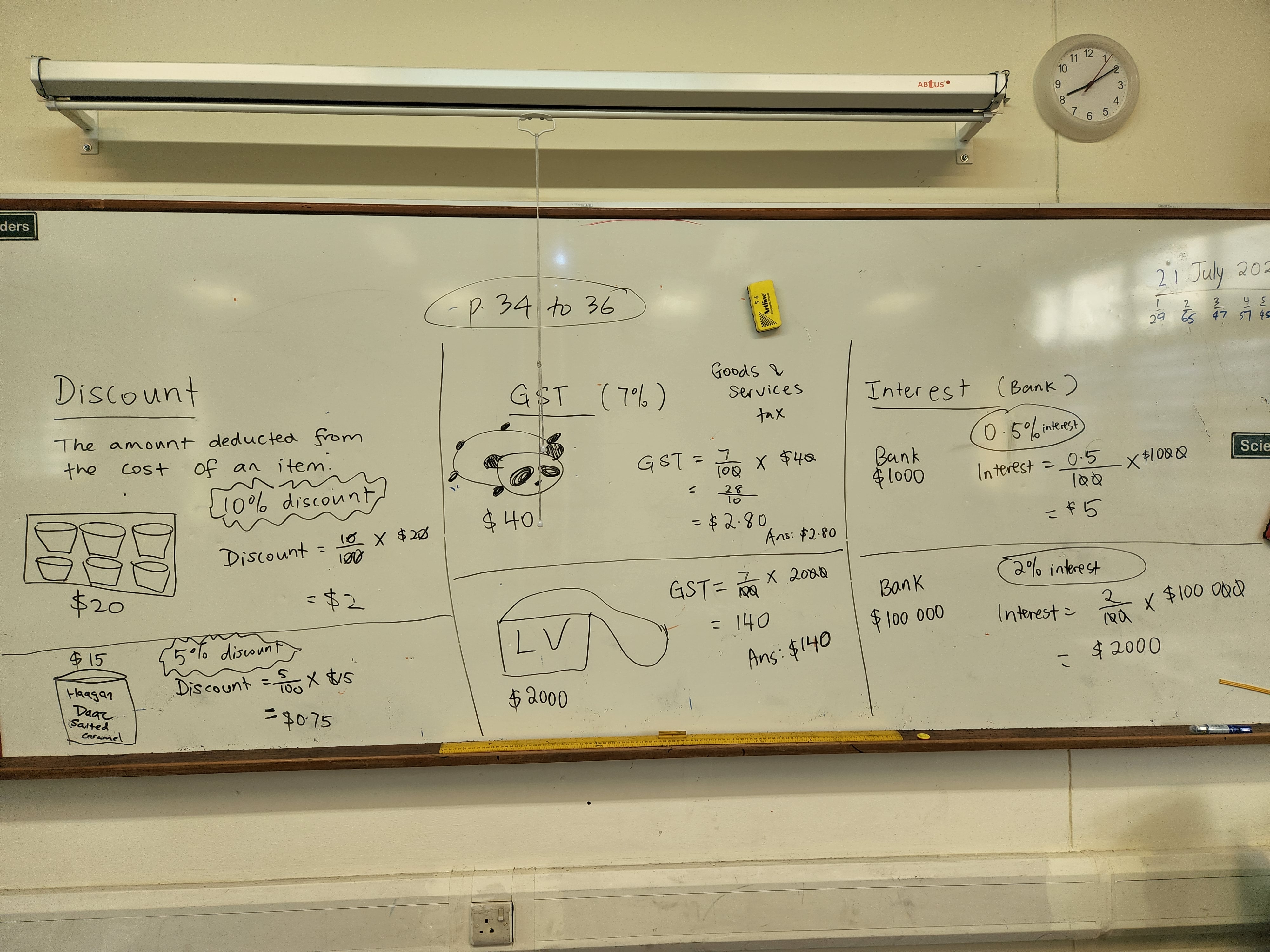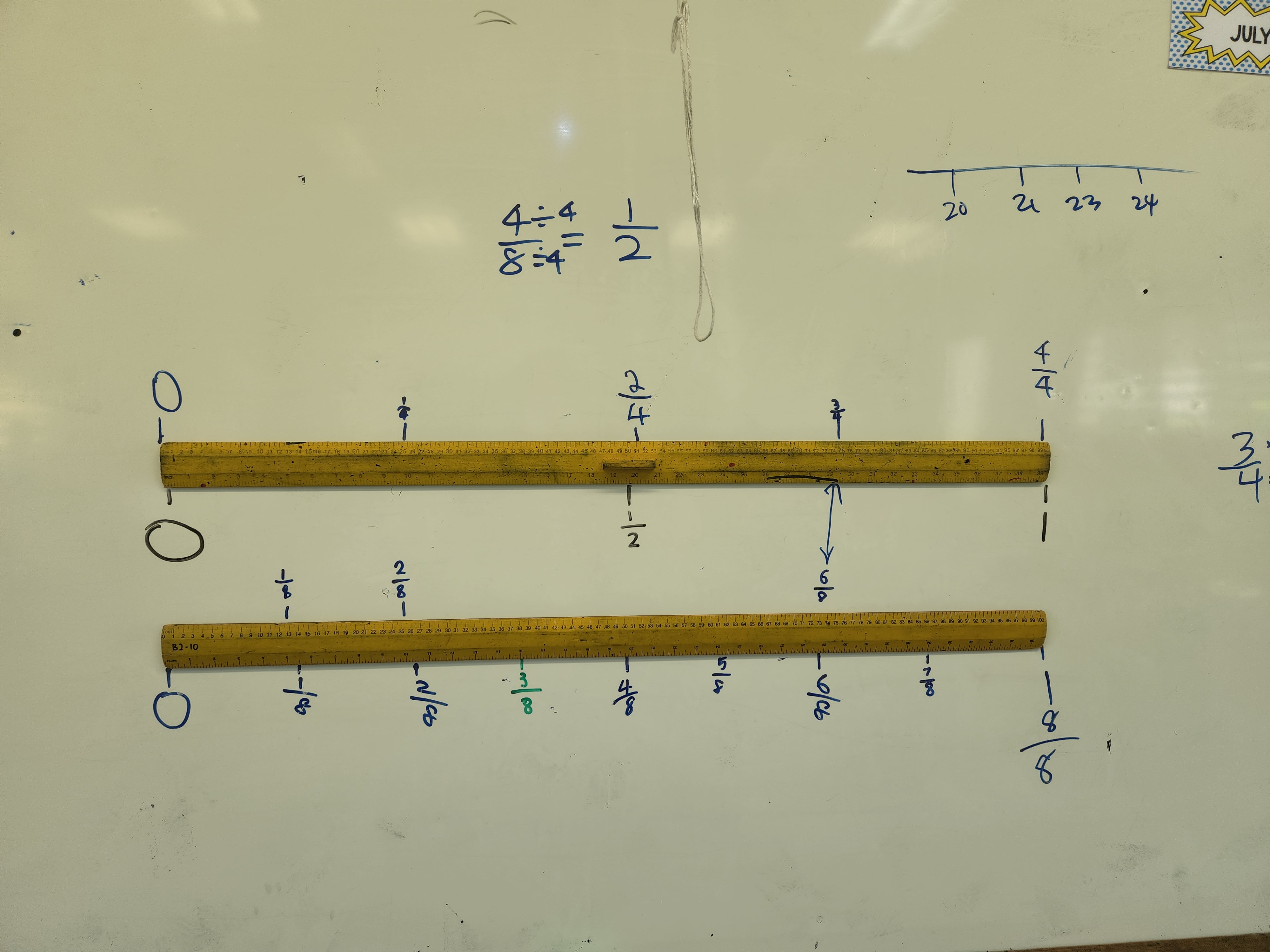Before I taught Percentage, I gave students the following problem to solve:
Ethan’s scores for WA1 are shown below:
English: 44/50
Mathematics: 34/40
Mother Tongue: 15/20
Science: 48/60
In which subject did he perform the best?
Students were given some time to think and were assured that there were more than one possible way of arriving at the answer. The following methods were mentioned:

There are certainly other ways of determining the best subject, but due to lack of time, I settled on these three. I asked students which method they liked the least and they said Method 1 because the numbers were large and it took more time to calculate. They liked Method 2 as 100 seemed like a nice base for comparison. I then introduced to them that “out of 100” is the concept of percent. I drew their attention to Method 3 and they saw that the numbers in Method 2 and 3 were related. For example, English was 88/100 as well as 0.88. This showed them that percentage, fractions and decimals were related.
In a later lesson, we discussed the calculation of discounts, GST and interest. We discussed these concepts in real life.












